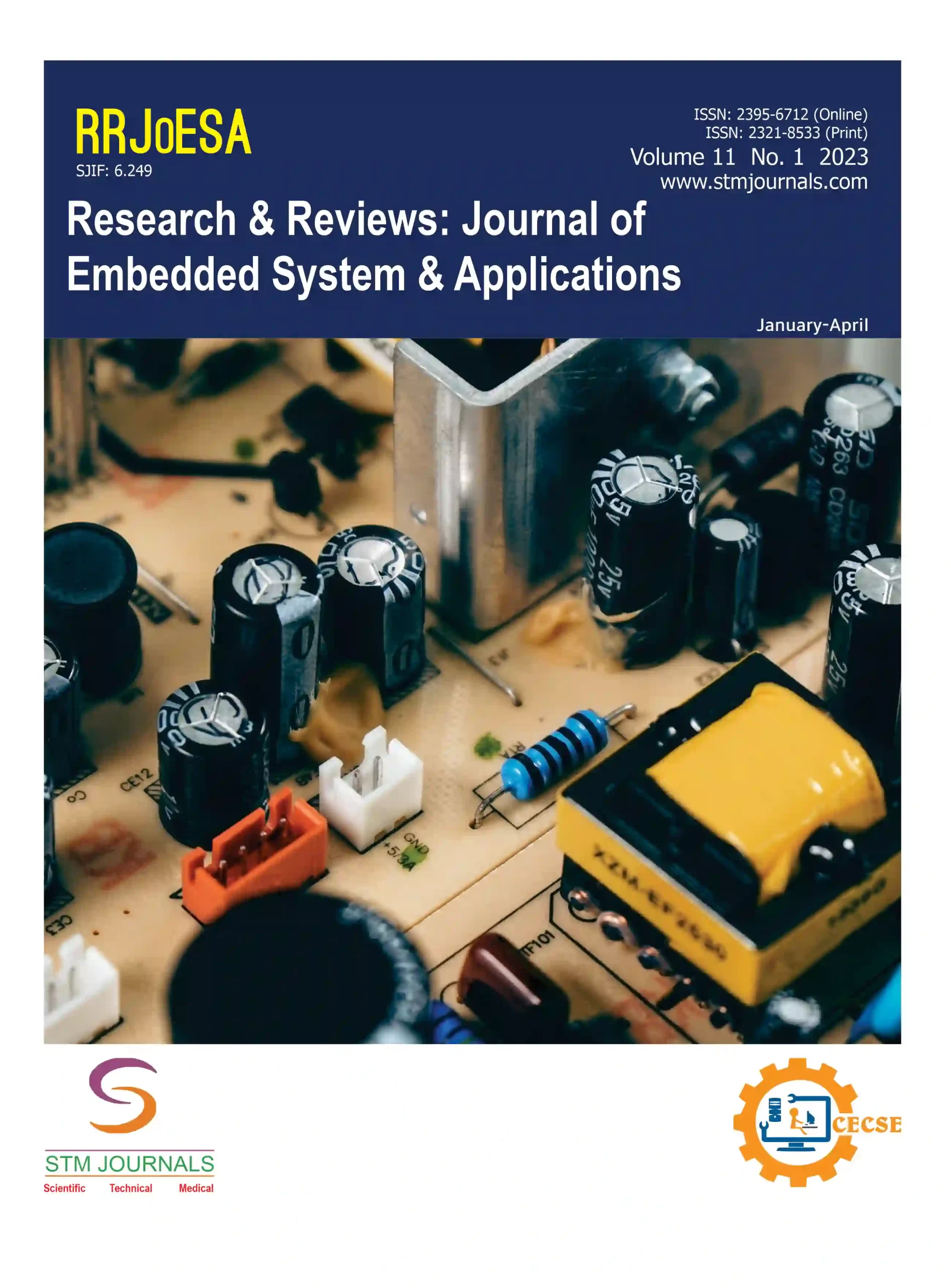
Mili Prasad

Bhavanesh Chandra Sharma

Kriti Agrawal

Tanvi Khandelwal

Akshara Jain
- Student Department of computer science engineering, Poornima College of Engineering, Jaipur Rajasthan India
- Assistant professor Department of computer science engineering, Poornima College of Engineering, Jaipur Rajasthan India
- Student Department of computer science engineering, Poornima College of Engineering, Jaipur Rajasthan India
- Student Department of computer science engineering, Poornima College of Engineering, Jaipur Rajasthan India
- Student Department of computer science engineering, Poornima College of Engineering, Jaipur Rajasthan India
Abstract
Wireless charging is a revolutionary technology that transfers power to electrical devices across an air gap, eliminating the need for tangled cords. It has become increasingly popular due to its convenience and effectiveness in powering gadgets. However, integrating wireless charging with current wireless communication technologies poses scheduling, power management, and technological challenges. Researchers are actively working on integrating wireless charging into various devices to meet the growing demand for this technology. Manufacturers are continuously striving to improve the effectiveness and speed of wireless charging to meet customer expectations. Safety features are also a focus area for advancement in wireless charging technology. The demand for electric vehicle (EV) charging stations is rising due to increased awareness of energy efficiency and environmental concerns. These stations consist of multiple charging units equipped with transformers, capacitors, control units, and high-quality processors. The charging process involves adjusting input AC voltage based on user-selected charging levels, supplying electrical energy to power vehicles and maintain battery charge. Overall, wireless charging and electric vehicle charging technologies are advancing to meet the needs of modern consumers, with a focus on convenience, effectiveness, and energy efficiency.
Keywords: coupling coefficient, static wireless charging, double-d coils, wireless charging system
[This article belongs to Research & Reviews: A Journal of Embedded System & Applications(rrjoesa)]
References
- Khan-ngern W, Zenkner H. Wireless power charging on electric vehicles. In2014 International Electrical Engineering Congress (iEECON) 2014 Mar 19 (pp. 1-4). IEEE.
- Akash Kharpude, Nadeem Khan, Nikita Katkar, Niranjali Kokitkar. Static Wireless Charging Station for Electric Vehicles. International Journal of Creative Research Thoughts (IJCRT). 2023;11(5):e159-e164.
- Purwadi A, Hariyanto D, Pribadi J, Rohmatulloh S, Hindersah H, Haroen Y. Modelling and analysis of high frequency resonant inductive power transfer for electric vehicle charging system. In2016 IEEE PELS Workshop on Emerging Technologies: Wireless Power Transfer (WoW) 2016 Oct 4 (pp. 214-220). IEEE.
- Qiu C, Kt C, Ching TW, Liu C. Overview of wireless charging technologies for electric vehicles. Journal of Asian Electric Vehicles. 2014;12(1):1679-85.
- Vinodini V S., Sriram R., Kailash Kumar B., R. Karthikeyan. Design and Implementation of Wireless Charging for Electric Vehicle. International Journal for Multidisciplinary Research (IJFMR). 2023;5(2):1-9.
- Rim CT, Mi C. Wireless power transfer for electric vehicles and mobile devices. John Wiley & Sons; 2017 Aug 7.
- Young K, Wang C, Wang LY, Strunz K. Electric vehicle integration into modern power networks. Power Electronics and Power Systems. 2013:15-49.
- Kim KY. Wireless power transfer-principles and engineering explorations. 2012 Jan 25.
- Abu-Rub H, Malinowski M, Al-Haddad K. Power electronics for renewable energy systems, transportation and industrial applications. John Wiley & Sons; 2014 Jun 2.
- Agbinya JI. Wireless power transfer. River Publishers; 2022 Sep 1.
- Bosshard R, Kolar JW. Inductive power transfer for electric vehicle charging: Technical challenges and tradeoffs. IEEE Power Electronics Magazine. 2016 Sep 5;3(3):22-30.
- Bosshard R, Kolar JW, Mühlethaler J, Stevanović I, Wunsch B, Canales F. Modeling and $eta $-$alpha $-Pareto Optimization of Inductive Power Transfer Coils for Electric Vehicles. IEEE Journal of Emerging and Selected Topics in Power Electronics. 2014 Mar 11;3(1):50-64.
- Mohamed N, Aymen F, Alharbi TE, El-Bayeh CZ, Lassaad S, Ghoneim SS, Eicker U. A comprehensive analysis of wireless charging systems for electric vehicles. IEEE Access. 2022 Apr 18;10:43865-81.
- Fisher TM, Farley KB, Gao Y, Bai H, Tse ZT. Electric vehicle wireless charging technology: a state-of-the-art review of magnetic coupling systems. Wireless Power Transfer. 2014 Sep;1(2):87-96.

Research & Reviews: A Journal of Embedded System & Applications
| Volume | 12 |
| Issue | 02 |
| Received | April 16, 2024 |
| Accepted | May 15, 2024 |
| Published | July 9, 2024 |
function myFunction2() {
var x = document.getElementById(“browsefigure”);
if (x.style.display === “block”) {
x.style.display = “none”;
}
else { x.style.display = “Block”; }
}
document.querySelector(“.prevBtn”).addEventListener(“click”, () => {
changeSlides(-1);
});
document.querySelector(“.nextBtn”).addEventListener(“click”, () => {
changeSlides(1);
});
var slideIndex = 1;
showSlides(slideIndex);
function changeSlides(n) {
showSlides((slideIndex += n));
}
function currentSlide(n) {
showSlides((slideIndex = n));
}
function showSlides(n) {
var i;
var slides = document.getElementsByClassName(“Slide”);
var dots = document.getElementsByClassName(“Navdot”);
if (n > slides.length) { slideIndex = 1; }
if (n (item.style.display = “none”));
Array.from(dots).forEach(
item => (item.className = item.className.replace(” selected”, “”))
);
slides[slideIndex – 1].style.display = “block”;
dots[slideIndex – 1].className += ” selected”;
}

